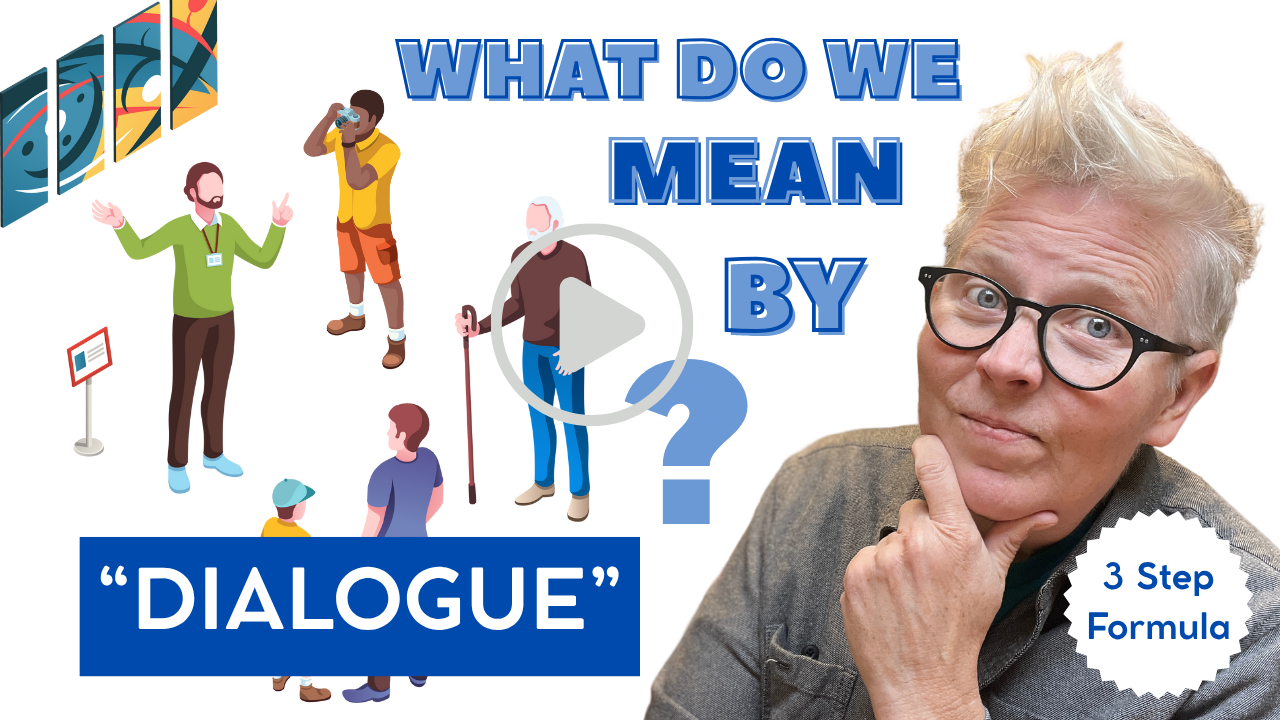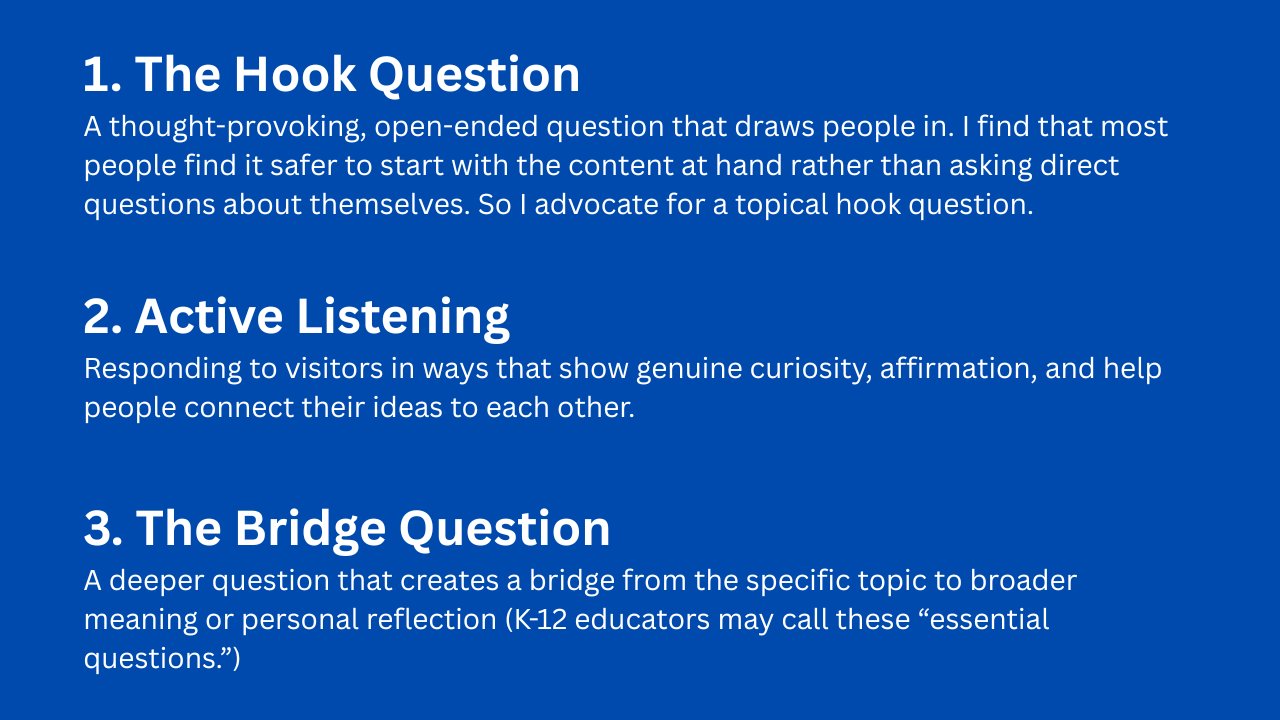Why Dialogue Is Misunderstood
It’s been a while since I’ve written here - closing in on 6 years! During that time, my work with museums and historic sites evolved in ways I couldn’t have predicted. But I haven’t stopped advocating for museums as spaces to actively create the world we want to see.
In 2020, I became a federal employee (Yes, this feral cat! 🐈⬛) - running the Education Department at Smithsonian’s Anacostia Community Museum just as the world was closing down. And although working for a giant bureaucracy was ultimately not for me, I am very grateful to have had the experience of working for a museum that centered social justice as a part of its DNA. This small museum with one gallery also reminded me how deeply impactful small batch experiences can be. Slower, deeper, conversations. Less content. More focus on visitor transformation. In the many meaningful conversations I had there, I could literally SEE people’s minds opening!
Now that I’m back out in these streets 🙌 as a consultant, I want to translate these lessons to museums of all kinds and address something that’s become increasingly urgent in these politically polarizing times:
Creating spaces where people can better understand themselves and each other. We have GOT to find ways to talk to each other - even in small ways.
Lately, that work has taken me to a new format - VIDEO. I’ve launched a YouTube channel to share what I’ve learned over the years about facilitating dialogue and other transformative learning techniques in museums other cultural spaces.
My latest video is called “Why Dialogue is Misunderstood (and How to Spot the Difference”, and it might surprise you.
I’ve spent many hours observing educator/visitor interactions. And have conducted dozens of interviews with both educators and education managers. What I’ve learned is that there is a disconnect about what we mean when we say “dialogue.” Educators may be asking visitors questions, sure. And there may be visitor participation - yay! But as I explain in the video, that’s not necessarily dialogue.
True dialogue is more than interactive teaching - it’s a process designed to open minds to new perspectives about the world, each other, and ourselves. USING our museum stories and content (history, science, art) as tool to open minds - rather than as facts to learn - is a major mindset shift for many. And I think this is exacerbated by our museums’ mission statements. How many of our museum mission statements emphasize “connecting people to x” (history, art, science etc) rather than USING this content for larger purposes? And after all, the content of our museums is what visitors are coming for, too. It’s a real art form to teach content while facilitating dialogue at the same time.
So I don’t blame the educators. This is the system we set up. It takes intention and practice to swim against the current. But it’s sooo worth it to witness people make meaningful connections!
Another problem, besides mindset, that I regularly encounter is a lack of definition for what “counts” as dialogue. If I’m evaluating an educator or docent and trying to determine whether they are actually facilitating dialogue, our field doesn’t have a rubric for that.
So I made one. And I’m now using it successfully in my work when doing onsite assessments.
In the video, I share this minimal 3-step definition for what counts as dialogue. This definition can also serve as a simple formula for educators who want to design dialogic interactions from the start.
To “count” as dialogue, these 3 minimum steps must be present:
I also introduce a 4th step that is recommended, but not required.
4. Meaning-Making - Summarizing or synthesizing what’s been said and reflecting on ways to apply these new understandings.
And because it’s MUCH easier to understand these steps when you can SEE them, in the video, I show what they look like in action through a short, simulated dialogue that might occur during a Civil War battlefield tour. I played all the parts in this simulated dialogue, so you can’t say I haven’t put myself out there for the cause! True ridiculousness 😎
My hope is that this video might be used as a catalyst for discussion in any museum education department. Ask:
Which of the steps is the most challenging?
How would you change this dialogue to fit your own style?
How could it have been made deeper and more impactful if you had time?
What is a visitor response that would scare you? How would you handle it?
How do you create a tone of openness throughout a tour to promote visitor comfort in opening up?
Let’s start small. Ask staff to experiment with these steps on ONE tour stop. Debrief about what questions work? Which ones don’t?
And to help support folks who might benefit from being given EXACT words and phrases to use, download this free resource, “Dialogue Sentence Starters.” And let me know how it goes!
Here’s to reopening the conversation 🥂



